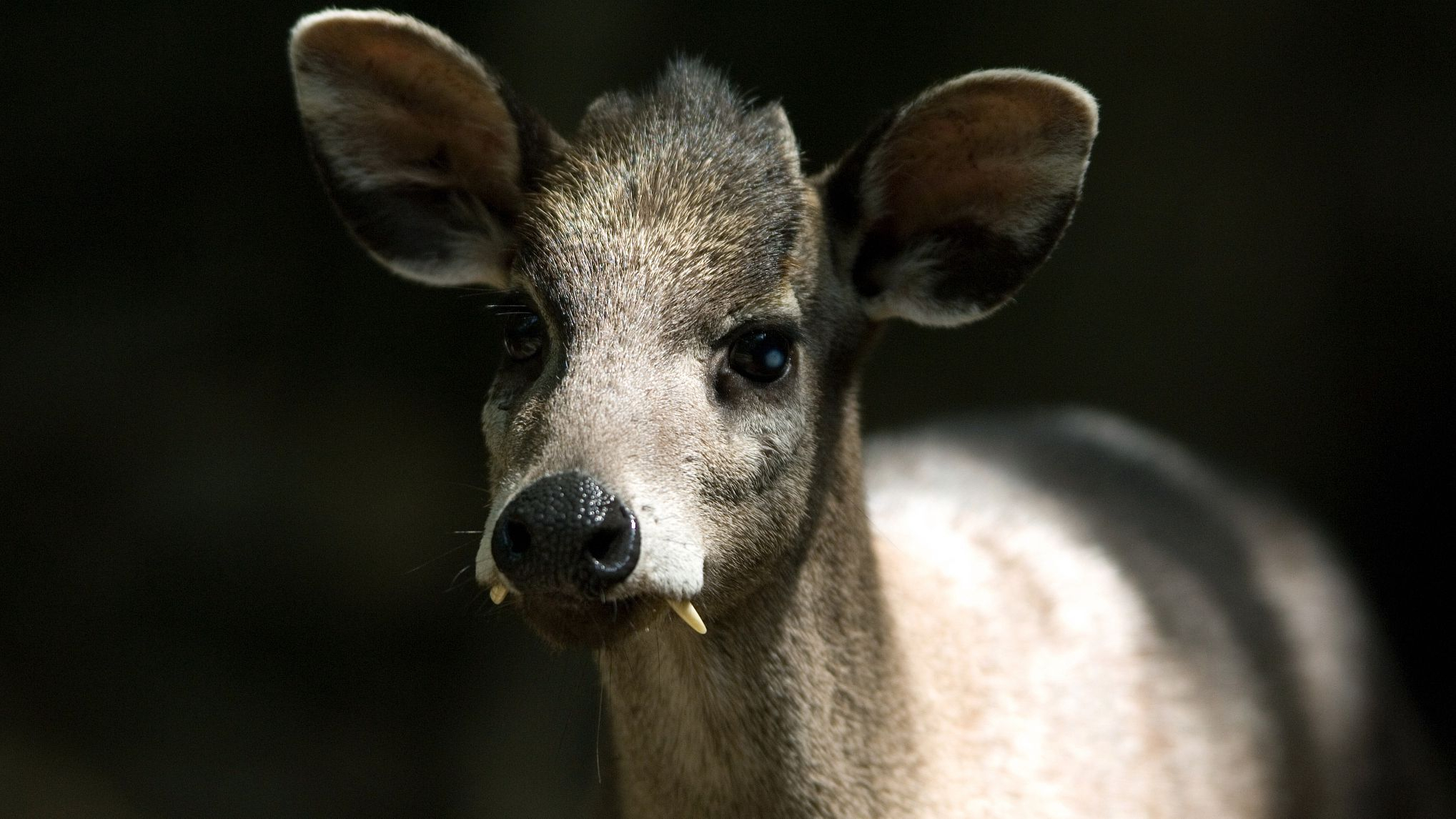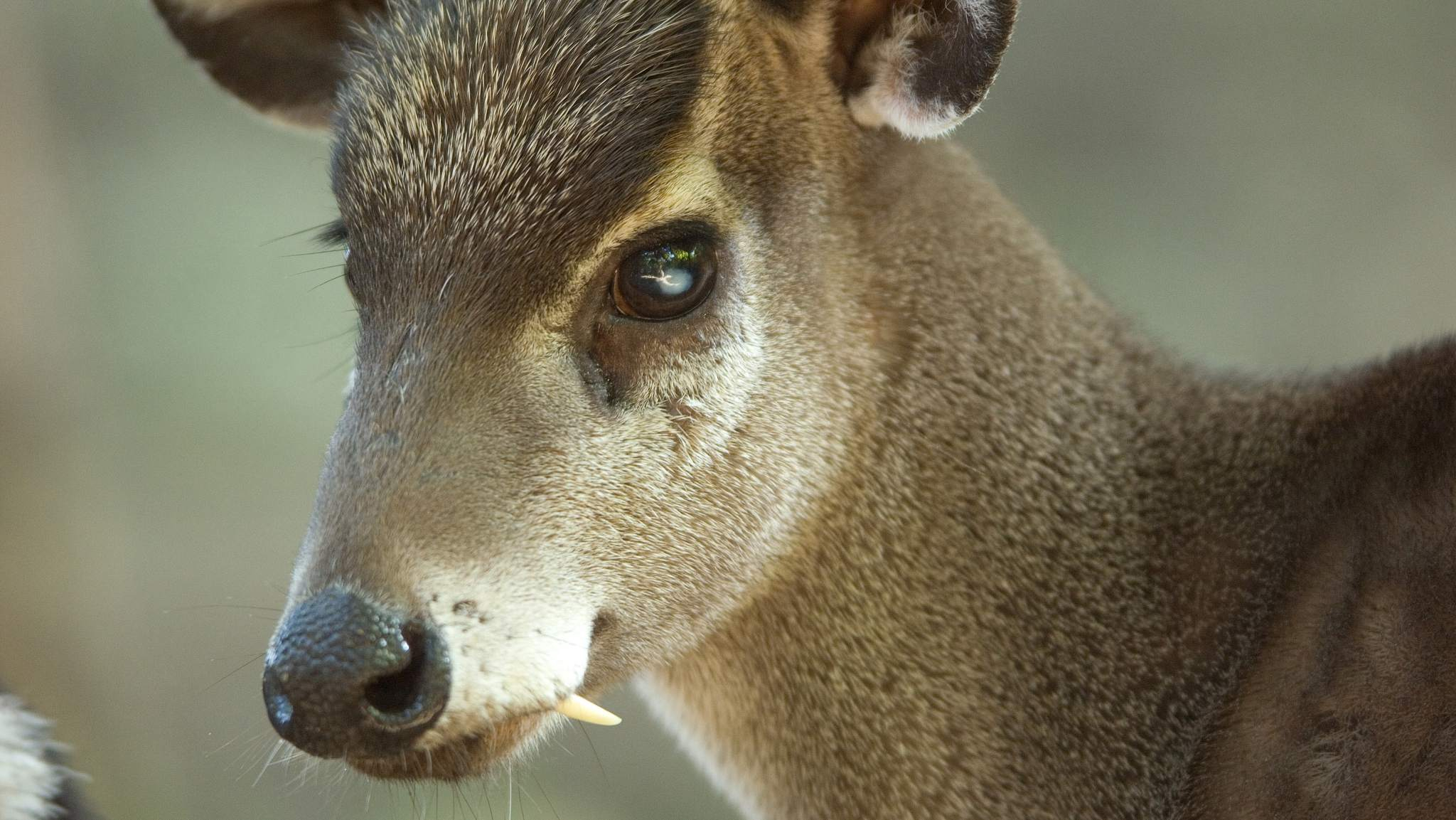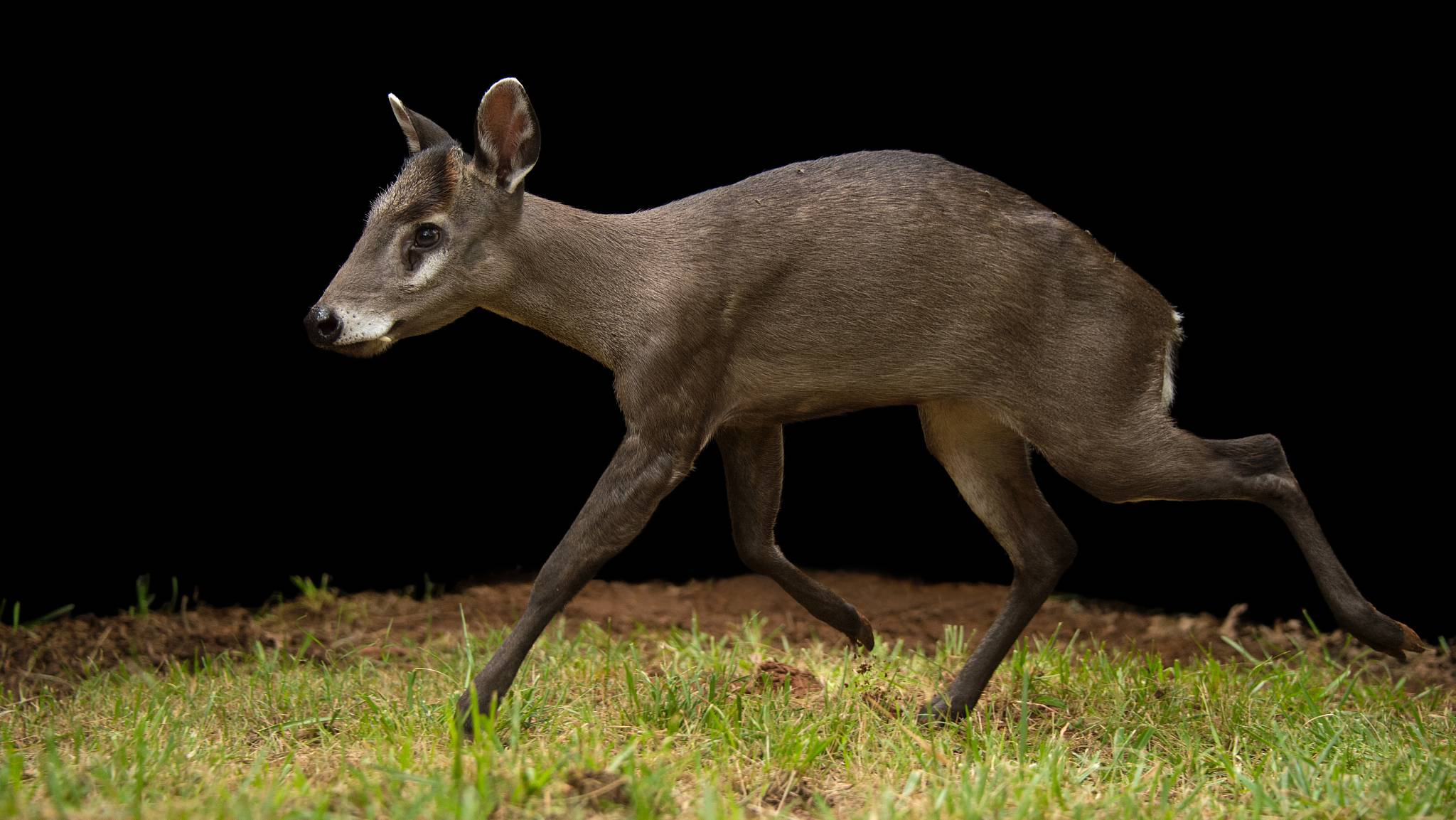
Nature
17:15, 10-Dec-2018
Tufted deer with 'vampire fangs' spotted in SW China
Updated
16:39, 13-Dec-2018
By Zhao Ying
00:50

An endangered deer with "vampire-like fangs" was recently spotted in a snow-covered forest in southwest China's Sichuan Province.
The rare tufted deer was videotaped by the staff in the Tangjiahe Natural Reserve, where it can be seen searching for food.

A Western tufted deer (Elaphodus cephalophus) at the Sunset Zoo, Kansas, U.S. /VCG Photo
A Western tufted deer (Elaphodus cephalophus) at the Sunset Zoo, Kansas, U.S. /VCG Photo
This small species of deer is called "tufted dear" because it has a prominent tuft of black hair on its forehead. It is often nicknamed as "vampire deer" for its creepy fang-like canines, which could usually grow up to 2.6 cm long.
People sometimes mistake tufted deer as barking deer for their similar appearance, but the longer necks and legs give it a slightly leaner appearance. They live in forested mountains up to 4500 meters above the sea level and are mainly seen in southern China, from the eastern coast to eastern Tibet.

A Western tufted deer at the Oklahoma City Zoo. /VCG Photo
A Western tufted deer at the Oklahoma City Zoo. /VCG Photo
As shy animals who prefer quietness, the tufted deer are often found alone. They forage on fixed routes in their own territory. When they feel disturbed by an enemy or humans, they bark and run away while lifting their tail upward exposing a white underside.
Due to over-hunting for their hide and habitat loss, the tufted deer is considered near threatened species as per the International Union for Conservation of Nature's (IUCN) red list.
In 1997, the Chinese government banned deer hunting, and the tufted deer is currently under provincial protection in many parts of China.

SITEMAP
Copyright © 2018 CGTN. Beijing ICP prepared NO.16065310-3
Copyright © 2018 CGTN. Beijing ICP prepared NO.16065310-3